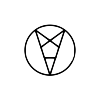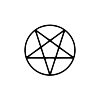Erotic Demonic / Eighties Crazies / Drowned Sounds
This week we’re thinking about a metaphysical horror classic and a 1980s-set slasher—then I’m recommending one of the great horror scores . . .

From the Grave.
Three ideas from horror cinema's past.
Adrian Lyne’s Jacob’s Ladder (spoilers below) remains as involving and provocative as ever—its gritty New York by turns alluring and nightmarish, its combination of the erotic and the demonic both potent and destabilizing.
- Genre slippage. Jacob’s Ladder is meant to be disorienting, and it disorients in several ways. It’s full of unnerving visual details (demonic faces and appendages), it skips through time, and it confuses dream, hallucination, and reality. But it’s disorienting, also, in terms of genre. Jacob’s Ladder feels, at different moments, like a drama about post-war PTSD, a horror movie about demons among us, a paranoid thriller about a secret military program, and a spiritual tale about the afterlife. Slipperiness of genre proves to be a deeply destabilizing feature. Genre provides us so many cues and structures as viewers—creates rules and expectations—that its blurring unmoors us. Jacob’s Ladder forces us to keep asking, “What kind of movie am I watching?” It’s a film about not knowing where you are, or what’s going on, so the effect is precisely the right one.
- Public labyrinths. Jacob’s Ladder discovers horror and thematic texture in complex public (or semi-public) spaces. Tim Robbins’s Jacob finds himself trapped in the subway system; running, desperate through the VA hospital; and encountering a vision of Hell when he’s taken to a different hospital after an accident. It is, to some degree, a recognizable experience. Large, complex interiors designed for many bodies are often difficult spaces to navigate. A city hospital, for a man in distress, might be a warren, or a labyrinth, or a descending coil into the underworld.
- On your back. In his descent into hospital Hell, Jacob’s wheeled on a gurney, on his back, at the mercy of hospital staff. Jacob has no control over where he’s going, as the sights rolling by become increasingly distressing. Jacob has a parallel experience—of lying supine, subject to the mercy of others, having lost all control—when he’s bayonetted in Vietnam and medivacked out (ultimately to an army field hospital). There’s something of this too (not the wheeling, but the vulnerability) in two scenes of Jacob on the chiropractic table, turned and manipulated by the chiropractor’s hands. Jacob’s Ladder has us experience the loss of basic bodily autonomy, a loss of control over how we take up space and where we go.

Right Behind You.
A thought on horror's present.
- Casually 80s. Shudder’s creepy new slasher Night of the Reaper travels to the 1980s to tell a twisty tale of a babysitter targeted by a skull mask-wearing killer. But why, I found myself thinking, is it set in the 80s? The production design and costuming is credible, but it isn’t going too hard on an 80s aesthetic. This isn’t a film drenched in neon. The ladies aren’t all wearing bright scrunchies and leg warmers. The styling here is tasteful and naturalistic. I was saying this to a friend of mine (who hasn’t seen the movie), and he pointed out that the 80s have the advantage of being a mobile phone-free era, a useful thing for a horror movie. This is an undeniable motive for setting horror movies in the past, but Night of the Reaper doesn’t really need it—its final girl has access to a landline (never cut) throughout. VHS tapes are important to the story, and add to the movie’s aesthetic, but it’s easy to imagine the movie with its video clips delivered in other ways. This isn't to say that the 80s setting is a bad thing—and to some degree its unfair to ask a movie to justify its time period. The present is just as arbitrary as the past. What we can say about slashers is that they do have a natural home in the 80s. The 80s are a nostalgic anchor for the genre—containing most of the slasher’s Golden Age and the heyday of the video rental store era. If the slasher feels, in many respects, like a creature of the 80s, then perhaps it’s only natural to return there.

Living Deliciously.
A recommendation.
- Mood music. There’s a film score I’m always returning to, especially when I’m writing horror or writing about horror: Mica Levi’s composition for Jonathan Glazer’s 2013 Under The Skin. Its delightfully unnerving melding of uneasy strings with buzzing and static effects can feel like a submerged Bernard Herrmann score—submerged perhaps in the same liquid Scarlett Johansson’s alien lures her victims into. An airy whistling; subaqueous percussive hits; an eerie, earwormy, nervous system-rousing motif; dreamy, Badalamenti-evoking space—Levi’s score maintains tone and continuity but keeps evolving. Under The Skin is an album that’s always uncanny, always a little hair-raising, and always a pleasure to listen to.
Dead of Night publishes every Tuesday. The outrage perpetrated by our federal administration in the gutting of USAID is leading to widespread starvation in camps where Rohingya (and other) war refugees have been settled in Myanmar/Burma and Thailand. A study published in The Lancet, pointed to in the article linked above, projects that "ongoing deep funding cuts—combined with the potential dismantling of the agency—could result in more than 14 million additional deaths by 2030, including 4.5 million deaths among children younger than 5 years." The moment to resist fascism is now.